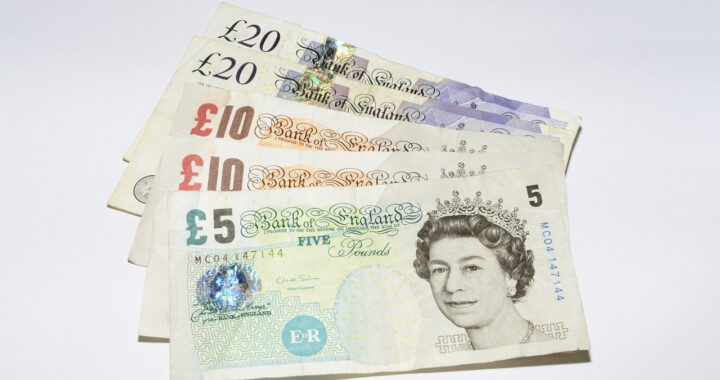In our related article, “What is QE (1) and what happened in 2008?” we looked at what we now refer to as QE1.
Here we are going to look at QE2 and identify how it is very different to QE1.
In the 2019 election the Conservatives set aside £130Bn each year to fund the so called ‘levelling up’ of the north with the south.
Wind forward to March 2020 when in the UK we started experiencing what COVID-19 really meant.
The UK government reacted commendably swiftly with a vast array of support packages for businesses and individuals (we have written about these extensively in other articles).
The cost of QE2 to end 2020 was about £380Bn with a further £150Bn committed until 31st March 2021 – and that was before Lockdown 3.0 from early January 2021.
These are incomprehensibly huge numbers which were funded by borrowing through the issue of gilts at virtually zero cost to the government. The Bank of England agreeing to provide the necessary funds and purchase the gilts at the highest price, bidding high enough to keep the cost of borrowing under 1%.
What is the difference between QE1 and QE2?
As well respected economist Roger Martin-Fagg neatly summarises:
“To keep it simple:
QE1 2009-2015 designed to rescue commercial banks and keep interest rates low
QE2 2020 on – designed to ensure households have an income, businesses unable to trade have cash even though there is no work; to keep interest rates low and to allow Government to run a deficit of £380Bn. In short, to avoid austerity
QE1 depended on a trickle down to drive GDP growth. QE2 is a direct driver of GDP growth.”
QE2 is quite different from QE1 in that most of the new money has found its way into household pockets and therefore individuals’ savings.
(Interesting statistic – household saving in December 2020 estimated to be one third of income when it usually flirts around 10% of income)
This is primarily due to there being little opportunity for people to spend money through the various coronavirus lockdowns and significantly less has had to be spent on travel to work.
When these savings do find their way into the economy – and when property prices are rising (as they are now), people will feel more confident and will spend – this will have the direct effect of driving GDP growth … or as the government hope, a GDP surge.
It was Roger Martin-Fagg’s December 2020 economic update that stimulated me to write this series of articles as it was a surprisingly upbeat assessment of the situation.
This against a backdrop of most commentators “banging on” about how taxes are going to have to rise significantly to bring down the unsustainable debt incurred by governments. And it will be the rich who will bear the brunt.
So let’s look at a couple more of Roger’s thought on the following questions:
- Do we need to pay it back?
Debt of itself is not a bad thing. Do you have a mortgage? Is it a bad thing? No, it enables you to live in a nicer property than you would probably have been able to afford otherwise.
It is not always appropriate to look at whole economies as a business – but let’s throw caution to the winds and try it for UK Plc.
Caveat: When comparing a country’s economy with a business there is a big problem – a business borrows, succeeds and repays the loan. For a country, it is our generation that borrows; our children’s generation repays.
Here are some estimates:
Total asset value for the UK £10 trillion
Current total debt £2.2 trillion
Current Revenue £820Bn
Current interest bill p.a. £55Bn
Which gives us a gearing ratio of 22% (£2.2 tr/£10tr) – a gearing ratio of 20-50% is considered pretty low risk for a well-established business.
And an interest coverage ratio of 15 – for commercial lending banks tend to like to see a ratio of at least 2.
Added to which this business of UK Plc has not missed a payment in over 300 years.
Sounds like a pretty sound business that most banks would give their back teeth to lend to.
- Have we got the headroom to do more QE?
Well – Yes, see the figures above. They look pretty sound and I guess banking colleagues could see there being a lot more scope to ‘support’ this business further – probably to the tune of a further £600Bn.
With interest rates low, it certainly makes sense for the government to borrow lots and build things cheaply (that might even be extended to HS2).
Eventually though, the cost of money will reassert itself and the then government (funded by our children) will have to pay a far higher rate of interest.
And then there is the whole global warming agenda which will need to be funded.
Conclusion
QE2 is another bailout channelled through the banks. And there will probably be more to come.
As a business, UK Plc is a very sound banking proposition which means that, just like any other business, the debt does not have to be paid back anytime soon.
And the UK government could create more debt (up to a further £600Bn) if needed without forcing these ratios into dangerous territory.
That is our take on what QE2 actually is and whether we really have to pay it back and it provides a backdrop for when you read our related articles:
- What is QE (1) and what happened in 2008?
- Can Banks really Create Money When they Want?
- Are there any Checks and Balances on the ability of banks to Create Money?
- Is this a Good Way to run our Economy?
- What is QE2 and do we really have to Pay it Back?
Note: A large chunk of the inspiration for this synopsis is drawn from the excellent Economic Updates produced by Roger Martin-Fagg

